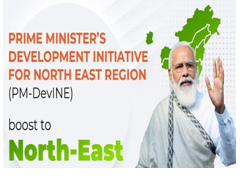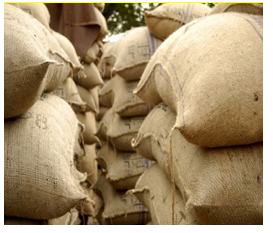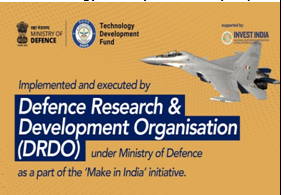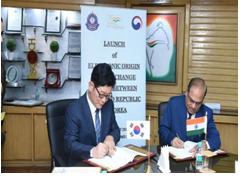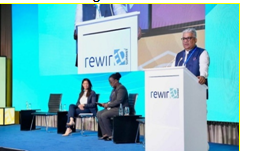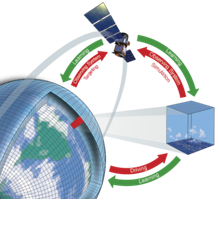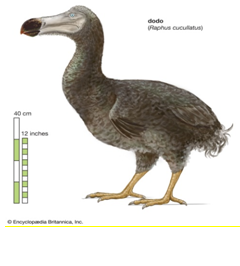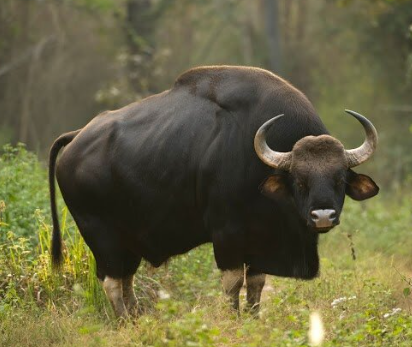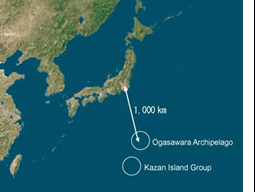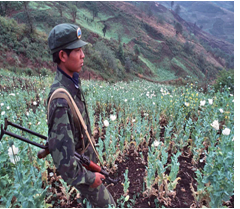

Polity and Governance (GS-II)
PM-DevINE Scheme
About the Scheme:
- Background:Prime Minister’s Development Initiative for North East Region (PM-DevINE) was announced in the Union Budget 2022-23 as a new Central Sector scheme with 100% Central funding and the scheme was approved by the Union Cabinet on 12th October, 2022, with a total scheme outlay of 6,600 crore for the 4 years period from 2022-23 to 2025-26 (remaining years of the 15th Finance Commission period).
- Aim: The PM-DevINE scheme aims at rapid and holistic development of NER by funding infrastructure and social development projects based on felt needs of the States.
- Objective: The objectives of PM-DevINE scheme are to:
- Fund infrastructure convergently, in the spirit of PM GatiShakti;
- Support social development projects based on felt needs of the NER;
- Enable livelihood activities for youth and women; and
- Fill the development gaps in various sectors.
- The projects sanctioned under the scheme are targeted to be completed by 2025-26.
Polity and Governance (GS-II)
Reservation norms for Jute Packaging Materials
Cabinet Committee on Economic Affairs approves reservation norms for Jute Packaging Materials for Jute Year 2023-24 under JPM Act, 1987.
About:
- The Mandatory packaging norms approved for Jute Year 2023-24 provide for 100% reservation of the foodgrains and 20% of sugar to be compulsorily packed in jute bags.
- Reservation for packaging in jute packaging material consumed around 65% of the raw jute produced in the country (in 2022-23).
- By bringing into effect the provision of JPM Act, the Government will provide relief to 4 lakh workers employed in jute mills and ancillary units as well as support the livelihood of around 40 lakh farm families.
- Besides, it will help protect environment because jute is natural, bio- degradable, renewable and reusable fibre and hence fulfils all sustainability parameters.
Jute Packaging Materials(JPM) Act:
- JPM Act, 1987 protects interest of Jute farmers, workers and persons engaged in jute goods’ production.
- 75% of the total production of the Jute Industry is Jute Sacking Bags of which 85% is supplied to the Food Corporation of India (FCl) and State Procurement Agencies (SPAs) and remaining is exported/sold directly.
|
The Jute industry occupies an important place in the national economy of India in general and Eastern Region in particular i.e. West Bengal, Bihar, Odisa, Assam, Tripura, Meghalaya, Andhra Pradesh and Telangana. It is one of the major industries in the eastern region, particularly in West Bengal. |
Polity and Governance (GS-II)
Technology Development Fund (TDF)
It is a flagship programme of Ministry of Defence executed by DRDO under ‘Make in India’ initiative. The main objectives of:
- Grant in Aid to Indian industries, including MSMEs and Start-ups, as well as academic and scientific institutions for the development of Defence and dual use technologies that are currently not available with the Indian defence Industry.
- Engage with the private industries especially MSMEs and Start-ups to bring in the culture of Design & Development.
- Research, Design & Development of Niche technologies for defence and armed forces.
- Create a bridge amongst the Armed Forces, research organizations, academia and qualifying/certifying agencies with private sector entities.
- Creation of an ecosystem of R&D where industry and Academia work together.
- Building of Defence manufacturing ecosystem in country thereby Achieving ‘Aatmanirbharta’ in defence technology
Polity and Governance (GS-II)
The first Indian Art, Architecture & Design Biennale
Prime Minister will inaugurate the first Indian Art, Architecture & Design Biennale (IAADB) 2023 being held at Red Fort.
About:
- Different theme based exhibitions to be showcased on each day of the week.
- Organised with the Vision to develop and institutionalise a flagship Global Cultural Initiative in the country like the International Biennales at Venice, Sao Paulo, Singapore, Sydney and Sharjah.
- In line with this vision, a nationwide campaign to reinvent, rebrand, renovate and re-house museums was launched.
- Further, development of cultural spaces in five cities of India namely Kolkata, Delhi, Mumbai, Ahmedabad & Varanasi was also announced. Indian Art, Architecture & Design Biennale (IAADB) will serve as an introduction to the Cultural Space at Delhi.
- Vision of ‘Vocal for Local’, ‘Aatmanirbhar Bharat Centre for Design’ at Red Fort is being set up. It will showcase the unique and indigenous crafts of India and provide a collaborative space between the karigars and the designers (sustainable cultural economy).
International relations (GS-II)
India-Korea Electronic Origin Data Exchange System (EODES)
EODES will facilitate implementation of India-Korea Comprehensive Economic Partnership Agreement (CEPA) by electronic exchange of origin information between the two customs administrations for goods traded under the CEPA
About the Electronic Origin Data Exchange System (EODES)-
- The Electronic Origin Data Exchange System is aimed at facilitating the smooth implementation of the India-Korea Comprehensive Economic Partnership Agreement (CEPA).
- By way of electronic exchange of origin information between the two customs administrations in respect of the goods traded under the CEPA.
- The data fields in a Certificate of Origin (CoO) shall be electronically shared by the exporting customs administration with the importing customs, as soon as the certificate is issued.
- This would facilitate faster clearance of imported goods.
Environment (GS-III)
Green Rising initiative
At the ReWired Summit at COP28 Dubai, the official launch of Green Rising took place, which is a platform aiming to empower youth-led climate actions and solutions.
About the platform:
- The global "Green Rising" initiative and the "Green Rising India Alliance" involve UNICEF, Generation Unlimited, and a diverse network of public, private, and youth partners.
- It aims to cultivate a proficient workforce within the environment and forest sectors. The recently launched Green Credits Initiative by Prime Minister of India at COP28 was highlighted, encouraging global collaboration for pro-planet actions.
- The minister urged businesses to join in championing sustainable lifestyles.
Science and Technology (GS-III)
Earth System Model (ESM)
A state-of-the-art Earth System Model (ESM) known as the IITM-ESM has been indigenously developed at Centre for Climate Change Research (CCCR), Indian Institute of Tropical Meteorology (IITM) under the Ministry of Earth Sciences.
About:
- This is the first Earth System Model from India and the climate change assessment carried out using IITM-ESM, was used in the latest Sixth Assessment Report prepared by the Intergovernmental Panel on Climate Change (IPCC).
- The National Climate Change Assessment report documenting the regional climate change projections has been released to benefit students, researchers, and policymakers.
How the system model works?
- Earth system models (ESM) seek to simulate all relevant aspects of the Earth system
- They include physical, chemical and biological processes, therefore reaching far beyond their predecessors, the global climate models (GCM), which just represented the physical atmospheric and oceanic processes.
Science and Technology (GS-III)
Google Gemini
Google took its next leap in Artificial intelligence with the launch of project Gemini, an AI model trained to behave in human-like ways.
What is Google Gemini?
- Gemini’s biggest advances will not come until early 2024 when its Ultra model will be used to launch “Bard Advanced”.
- The AI, at first, will only work in English throughout the world, although Google executives assured reporters during a briefing that the technology will have no problem eventually diversifying into other languages.
- The rollout will unfold in phases, with less sophisticated versions of Gemini called “Nano” and “Pro” being immediately incorporated into Google’s AI-powered chatbot Bard and its Pixel 8 Pro smartphone.
- The technology’s problem-solving skills are being touted by Google as being especially adept in Maths and physics, fuelling hopes among AI optimists that it may lead to scientific breakthroughs that improve life for humans.
Dodo (Raphuscucullatus)
Recently, under an ambitious new project — collaboration between genetic engineering company Colossal Biosciences and the Mauritian Wildlife Foundation —have targeted to bring back the dodo and also re-introduce it in its once-native habitat in Mauritius.
About:
- They are extinct flightless bird of Mauritius (an island of the Indian Ocean), one of the three species that constituted the family Raphidae, usually placed with pigeons in the order Columbiformes but sometimes separated as an order (Raphiformes).
- The birds were first seen by Portuguese sailors about 1507 and were exterminated by humans and their introduced animals.
- The dodo was extinct by 1681.
- Features of the Species:
- The dodo, bigger than a turkey, weighed about 23 kg (about 50 pounds).
- It had blue-gray plumage, a big head, a 23-cm (9-inch) blackish bill with reddish sheath forming the hooked tip, small useless wings, stout yellow legs, and a tuft of curly feathers high on its rear end.
Indian Bison (Bosgaurus)
The Koya tribe inhabiting the Papikonda hill range along the rivers Godavari and Sabari in Andhra Pradesh has decided to do away with millennia-old traditions in an attempt to conserve the Indian Bison (Bosgaurus).
About the Species:
- The Indian Bison or Gaur (Bosgaurus) is the tallest species of wild cattle found in India and largest extant bovine.
- There are about 13,000 to 30,000 gaurs in the world with approximately 85% of the population present in India.
- The first-ever population estimation exercise of the Indian gaur carried out in the Nilgiris Forest Division in February 2020 estimated around 2,000 Indian gaurs to be inhabiting the division.
Geography:
- It is native to South and Southeast Asia.
- In India, they are very much prevalent in the Western Ghats.
- They are primarily found in Nagarhole National Park, Bandipur National Park, Masinagudi National Park and Biligirirangana Hills (BR Hills).
- It is also found in Burma and Thailand.
Habitat:
- They prefer evergreen forests and moist deciduous forests.
- However, they can survive in dry deciduous forests
- They are not found in the Himalayas with an altitude greater than 6,000 ft.
- They generally stick to the foothills only.
Ogasawara Island chain
Japan has recently witnessed the birth of another island in its archipelago.
- This phenomenon occurred due to a series of volcanic eruptions near Iwoto Island in the Ogasawara island chain, showcasing the dynamic nature of the country’s geography.
About:
- Iwoto Island, part of the Ogasawara island chain, is approximately 1,200km (745 miles) south of Tokyo.
- Ogasawara Island chain, also known as Bonin Islands, is a volcanic arc comprising more than 30 islands and islets. Some of them are still active.
- Formation of the new island is a rare phenomenon with the last record of such volcanic activity in 2013.
- Japan has the most active volcanoes in the world at 111.
Golden Triangle of Opium
The United Nations Office on Drugs and Crime (UNODC) has reported that Bangkok (Thailand) – Opium cultivation in the Golden Triangle continued to expand over the past year, with a significant increase in Myanmar.
What is Golden Triangle of Opium?
- Northeastern Myanmar is part of the infamous “Golden Triangle”, where the borders of Myanmar, Laos and Thailand
- Myanmar, Thailand, Laos coordinated as “the Golden Triangle”which has been one of the largest opium-producing areas of the world since the 1950s.
- Most of the world's heroin came from the Golden Triangle until the early 21st century when opium production in Afghanistan increased.
|
Why named so?
|
